RIP: Last Original Chairlifts Demolished at Alpental, Big Sky, Sunlight, Meadows
Why is it so hard to let old things die?
It’s some kind of topographic miracle, this sprawling ski complex an hour east of Seattle: 2,000 acres, 428 inches, 25 lifts, soaring views, door-to-door interstate connection. Michigan-based Boyne Resorts has run The Summit at Snoqualmie since 2007 and itemizes the center as one of the company’s 10 ski areas, its second largest after Big Sky. The on-the-ground ski experience is more complicated. Sprawling over nearly five miles, this listed-as-a-single-ski-area-on-your-Ikon-menu resort is actually four legacy ski areas hammered together over nine decades. Hyak and Ski Acres and Snoqualmie Summit and Alpental. Even today they are not one true ski area. Summit East, Central, and West are chained together by connector trails in a three-and-a-quarter mile top-to-bottom maze that dead-ends where I-90 hinges enormously through the pass. The skiing across this monster zone is quirky and interesting and moderately confusing and occasionally steep, a museum of strange ideas, abandoned buildings and partly demolished lifts slowly transmogrifying into a modern ski resort. Families go there. School buses. Racers and seasonlongs and cruisers who relish an outdoor gym. But for seekers of the ungroomed and the oh-shit steep, The Summit at Snoqualmie is all about separate, across-the-interstate Alpental. And Alpental is all about Chair 2.
Chair 2, officially “Edelweiss,” a centerpole Riblet double, opened in 1967, the same year as Alpental. The lift rises 1,104 vertical feet in just 2,280 linear feet, a 41.1 percent pitch that is among the steepest of any chairlift in the country. To a modern skier accustomed to Boyne’s ski-in Octopus barns and chugalong detachables, Chair 2 looks improvised, primitive, like something a backyard tinkerer welded together for his kids. With pizza-box seats and no restraint bars and Erector Set towers and terminals, the lift looks fundamentally unsafe. It crosses over a freefall of natural halfpipes and glades and cliffs, terrain impossible to imagine skiers navigating on 1960s technology, even while riding above it on machinery of exactly that vintage.
Locals love Chair 2. They love its simplicity and they love its shabbiness and they love how it frightens the uninitiated. They love its character, the way it seems to speak to them in its bouncing, swinging journey. They love the machine-as-artwork patina absent in our chain-store present. They love that there’s no easy way down. They love the community and camaraderie of the often-snaking-downhill liftline. Most of all, they love that this machine is 58 years old and still works.
But Chair 2 – at least that Chair 2 – spins no more. Crews began dismantling Edelweiss last month, clearing the way for a new Doppelmayr triple chair.
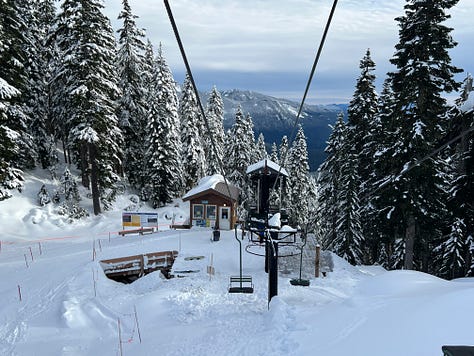
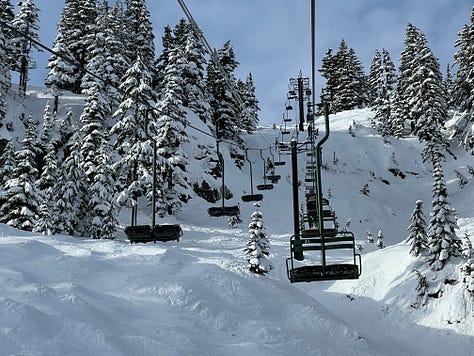
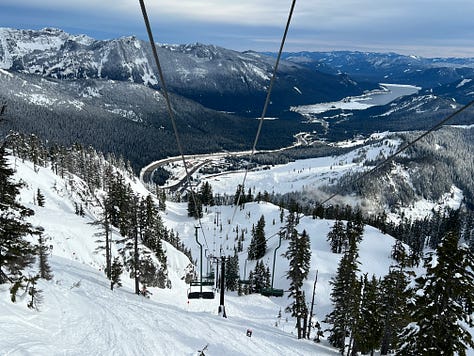
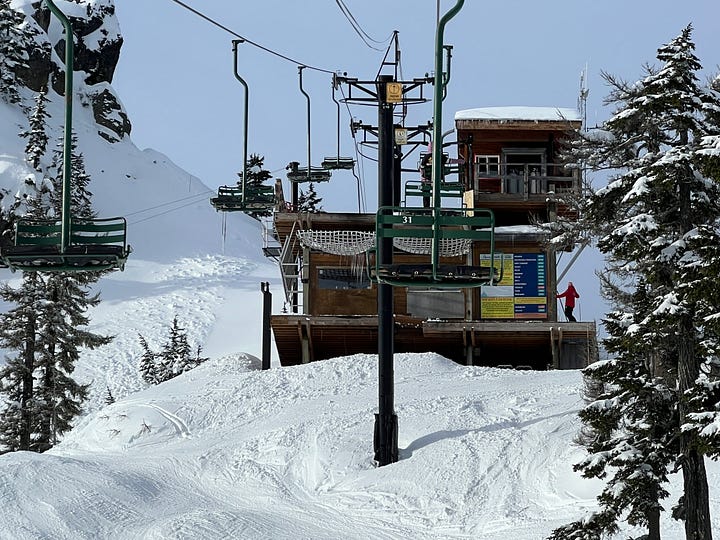
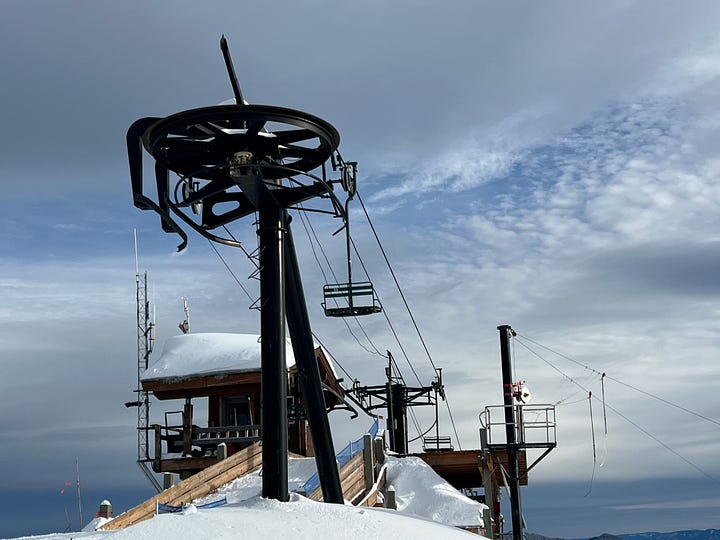
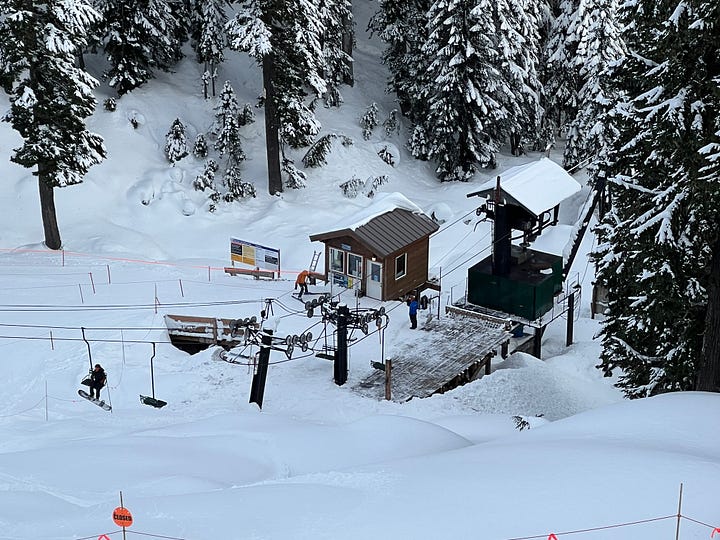
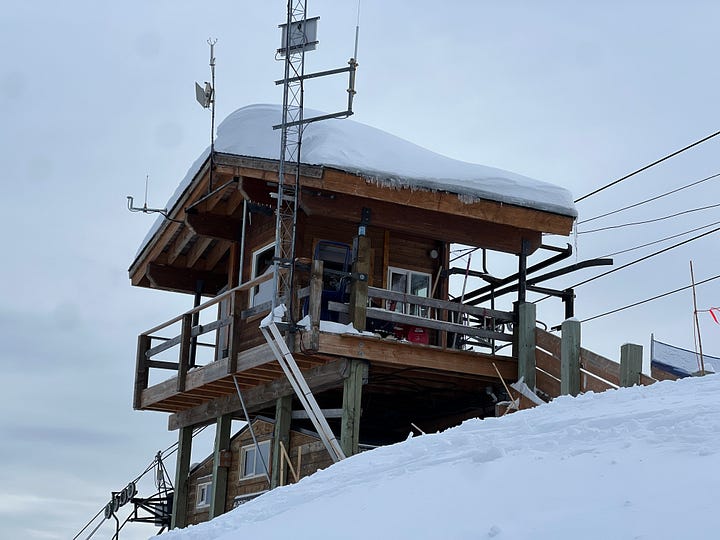
Edelweiss is not the only original chairlift hacked from the surface of an iconic resort this offseason. A 10-hour drive east, Boyne is demolishing Big Sky’s Heron-Poma Explorer double chair, the last survivor from the ski area’s 1973 opening, to make way for a 10-passenger, two-stage gondola. Sunlight, Colorado is replacing a pair of Riblet doubles, one dating to the mountain’s 1966 opening, with a new fixed-grip quad and a used triple from A-Basin. And two years after dropping their first six-pack on a parallel line, Mt. Hood Meadows will remove the Blue double, a 1968 Riblet that is the last lift standing from the ski area’s first winter.
After lagging Europe for decades, North America is five years into an aerial ski lift renaissance, erecting approximately 250 new machines since 2020, according to Lift Blog’s annual summaries. Another 48 lifts will rise this summer. Some will serve expansions, but the majority will replace legacy machines, many of them beloved chairlifts from defunct manufacturers Hall and Borvig and Yan, endangered species being hunted toward extinction. These enormous investments indicate that North American lift-served skiing is a healthy, growing industry positioning itself to compete for the modern attention span.
But skiers, particularly locals, are often reflexively hostile to the loss of beloved antique chairlifts. A quick scroll down Alpental’s Facebook page reveals scattered but persistent pushback to Chair 2’s replacement.
Such complaints are not specific to Alpental. Four days after publishing a 2023 podcast in which Mt. Spokane GM Jim van Löben Sels outlined plans to replace the circa 1956 Vista Cruiser Riblet double with a modern triple chair, I received a series of direct messages from user Redeyeworkshop to The Storm’s Instagram account:
A post with similar sentiments appeared on an Instagram account called mtspokaneskiboardpark two months later:
The crazy part is not the messages. The crazy part is that some small piece of me, however irrationally, agrees with them.






